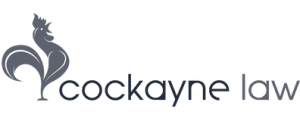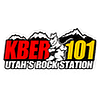How to File a Car Accident Claim in Utah?

A crash turns a normal day into a long list of worries. You might be in pain. Your car is damaged, and the insurer is already asking questions. We have compiled this guide to help you understand how to file a car accident claim in Utah in simple terms. We start with safety and proof, then move into insurance steps, reports, and deadlines.
You will learn where Utah’s no-fault rules apply, when you can step outside them, and how to keep your claim moving. If you have trouble along the way, searching for a car accident injury lawyer can help you find local help fast. Use this blog as your simple roadmap. So you can focus on healing and getting your life back on track.
Key Points You Should Know
- Utah uses no-fault Personal Injury Protection
- PIP pays first medical bills up to threshold
- You can still file property damage claims
- Serious injury can step outside no-fault rules
- Report crashes that hit legal reporting thresholds
- Collect photos, video, and witness contacts early
- Tell your insurer quickly and follow directions
- Do not guess about injuries or fault statements
- Keep every bill, record, and repair estimate
- Watch Utah filing deadlines and fault rules
Filing Car Accident Claims in Utah: What it Really Means
Filing a claim means telling an insurance company you were in a crash, you have losses, and you are asking for payment under the policy. In Utah, no one is responsible for your medical bills. Your own Personal Injury Protection, often called PIP, pays the first medical costs up to the legal threshold.
Once medical costs reach that mark, or if injuries are serious, you can pursue the at-fault driver’s insurer for more. Property damage claims are separate. You can seek payment for vehicle repairs or a total loss from the at-fault driver’s liability coverage while your PIP handles medical bills. The claim process is not a lawsuit. It is an insurance request that can lead to a settlement.
If the insurer underpays or denies, a lawsuit can follow. Knowing these parts helps you plan proof and deadlines from day one. Utah’s PIP threshold and no-fault rules are set by state law and guidance from the Utah Insurance Department.
First-party vs third-party
First-party claims go to your own insurer. Third-party claims go to the at-fault driver’s insurer. You may file both when injuries and car damage overlap.
Steps to File a Car Accident Claim
You can file a stronger claim if you move in a steady order. Use this simple flow and adapt it to your crash.
First 24 hours
- Get medical care. Tell doctors every symptom.
- Call 911 for injury, danger, or blocked traffic.
- Swap names, insurance, license, and plate numbers.
- Take wide and close photos of cars, roads, lights, and injuries.
- Ask witnesses for contact details.
Open your claims
Don’t hesitate to contact your insurer. Don’t make guesses, give facts. Ask how to open your PIP claim for medical bills and a separate claim for car damage. If the other driver is clearly at fault, also open a third-party claim with their insurer. Keep a log of every call and upload photos to each claim file. Utah’s Insurance Department advises contacting your own insurer quickly and explains how PIP pays medical costs before you can seek more from the other side.
Proof that helps
Save the police report number, repair estimates, rental bills, medical bills, work time lost, and a short pain journal. Many people also search car accident injury attorneys near me to get help organizing proof and talking with adjusters.
Reporting a Crash in Utah and Filing Without a Police Report
Utah law sets clear triggers for when police reporting is required. If there is injury or death, or total property damage that appears to be at least $2,500, you must involve law enforcement. Officers who respond file the official report.
In some cases, the Department of Public Safety can require you to submit your own written report within ten days. The state crash report manual and code sections explain these duties and thresholds. When in doubt about damage, call the police so the event is documented. These records often speed claims and reduce fights over fault.
What if there is no police report
It is still possible to file an insurance claim without a police report. Insurers will look for other proof, such as photos, video, dashcam clips, repair estimates, and medical records. Get witness statements by text or email with names and phone numbers.
Ask nearby businesses for camera footage quickly since many systems overwrite within days. If the crash later appears to meet Utah’s reporting threshold, contact local police to ask how to submit a late report or self-report as directed by the department. When you notify your insurer, be clear and consistent.
If you need help, looking for a car accident injury lawyer near me can connect you with someone who can guide your reporting steps and evidence requests.
Deadlines, Fault Rules, and Insurance Basics in Utah
Utah’s no-fault rule means your PIP pays early medical costs. The legal threshold is three thousand dollars in medical expenses per person before you may pursue more for pain and suffering from the at-fault driver, unless you suffered certain serious injuries. Knowing that threshold helps you plan proof and billing.
Utah also has filing deadlines. Some claims have shorter limits, such as claims against a government entity, so you should not wait to speak with counsel about your exact timeline. Setting a personal reminder early can save your case.
Fault matters too. Utah follows a modified comparative negligence rule. Your recovery is reduced by your share of fault, and you cannot recover if your fault is greater than the combined fault of the other side. In simple terms, you need to be less at fault than the people you are claiming against. This rule often drives insurers to argue percentages, so detailed proof is important.
Tips that protect your timeline
Ask your doctors to code bills under PIP first. Keep a single spreadsheet of dates, bills, claim numbers, and paid amounts. If an adjuster asks for a recorded statement, consider getting advice first by searching car accident injury attorneys near me and speaking with a local professional.
Hire the Best Car Accident Lawyer in Utah – Chris Cockayne
When pain, bills, and calls from two insurers hit you at once, you need a steady hand. A seasoned Utah injury attorney knows PIP rules, reporting triggers, and how to line up proof in the order insurers respect. A local lawyer also knows area doctors, repair shops, and the courts. That means fewer delays and less confusion.
The right lawyer can push for a fair number without the usual runaround. If you are already comparing options after searching for a car accident injury lawyer near me, add Chris Cockayne to your shortlist. His focus on Utah crash cases and clear updates can lower your stress while raising the quality of your claim file.
About Chris Cockayne and Cockayne Law
Chris Cockayne leads Cockayne Law, a Utah personal injury firm that handles car accident cases across the state. The firm’s site explains that they pursue full payment using evidence, medical input, and firm negotiation. They offer a free consultation and work on a no win, no fee basis for injury cases, which helps people get started without upfront cost.
Clients get help with both injury and auto damage claims, plus guidance on dealing with adjusters and medical billing. The team builds each file with photos, reports, and expert notes that prove cause, injury, and loss. That work gives you leverage whether you end with a settlement or, if needed, a lawsuit.
If you called or found them while looking car accident injury attorneys near me, ask how they would plan your case from day one, what they expect from the insurer, and how they keep you updated. Clear answers early are a good sign you will be well taken care of.
Final Thoughts
Filing a Utah car accident claim is easier when you follow a simple plan. Take care of your health, document the scene, report the crash when the law requires it, and open both injury and property claims fast. Know that PIP pays first, keep every receipt, and watch your deadlines. If the insurer gives you the runaround, clear proof and steady follow up often bring better results.
If you want help, a quick search for a car accident injury lawyer near me will show local options, including Cockayne Law, that can take stress off your plate. Focus on steady steps and facts. That approach turns a hard day into a claim that moves.
FAQs
Do I have to report every crash to the police in Utah?
Not every crash. You must report if anyone is hurt or killed, or if total property damage appears to be at least $2,500. When in doubt about damage, call the police so it is documented.
Can I file a claim without a police report?
Yes. Insurers accept other proof. These include photos, videos, witness contacts, repair estimates, and medical records. Still, a report makes the process smoother. If your crash later appears to meet Utah’s reporting threshold, contact law enforcement or the Department of Public Safety for self-report steps.
Will my rates go up if I use PIP?
Rate changes depend on many factors, including fault, the claim type, and your insurer’s rules. Using PIP for medical bills after a crash does not prove fault, but any claim can affect pricing. Ask your agent how your policy handles no-fault medical claims.
How do I start the claim with my insurer?
Call your insurer as soon as you can. Have your policy number, photos, the police report number, if any, and the other driver’s insurance. Ask for a PIP claim for medical bills and a separate claim for property damage, then upload documents as you receive them.
When should I hire a lawyer?
If injuries are more than minor, if fault is disputed, if the car is totaled, or if the insurer is delaying or underpaying, it is smart to talk with a lawyer. Many people search for car accident injury attorneys and choose a Utah firm that offers free consultations, such as Cockayne Law.








